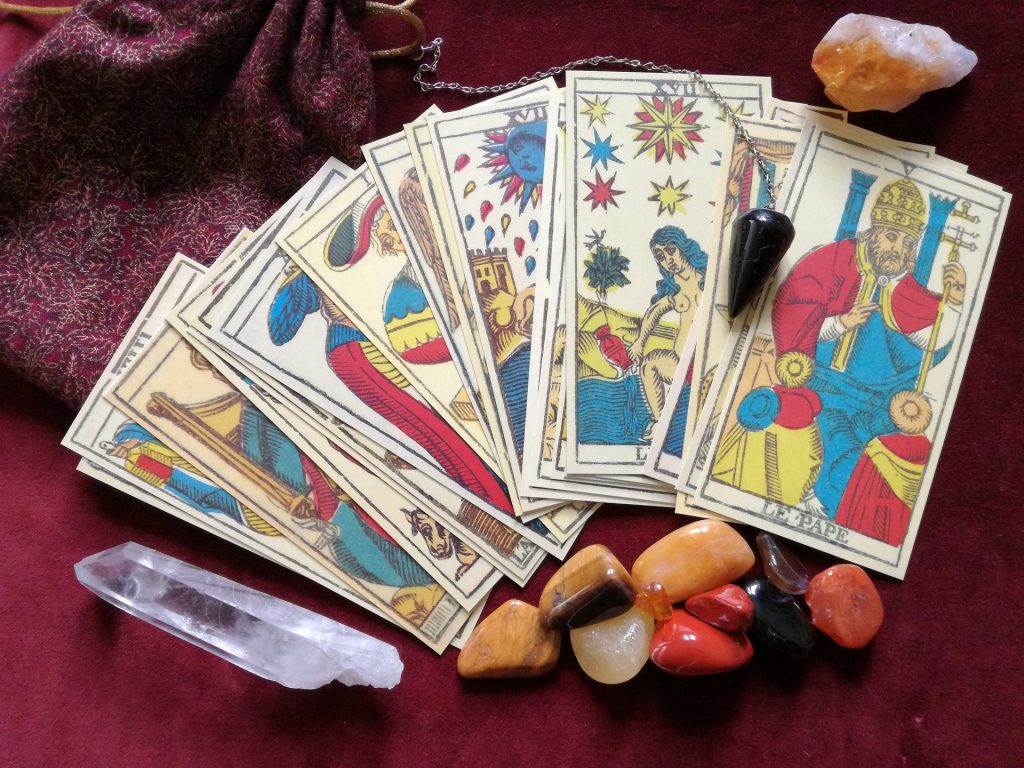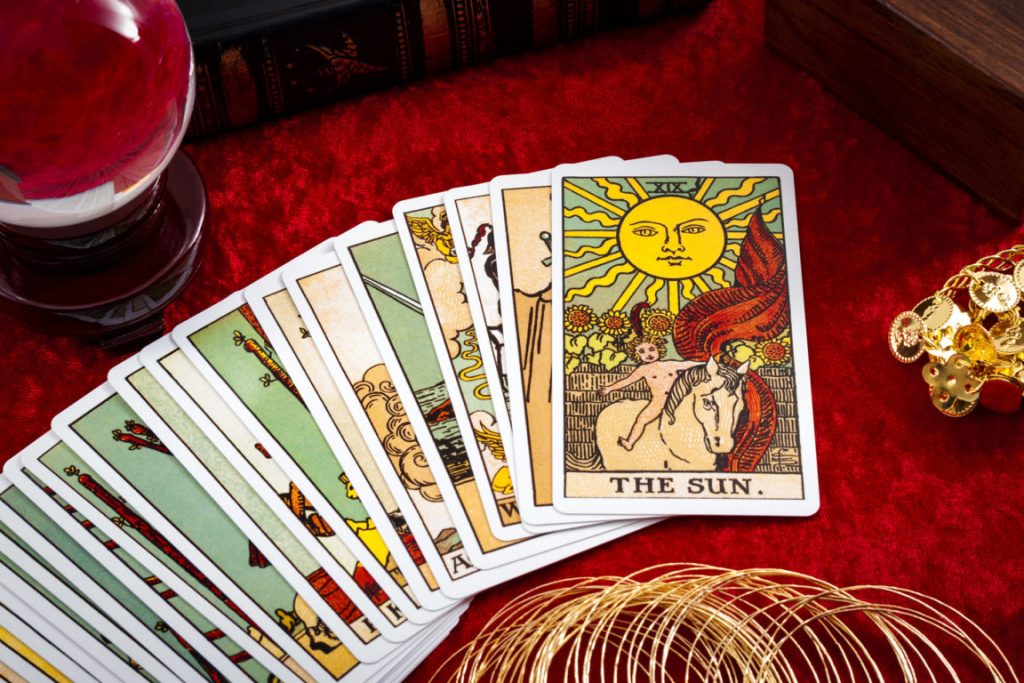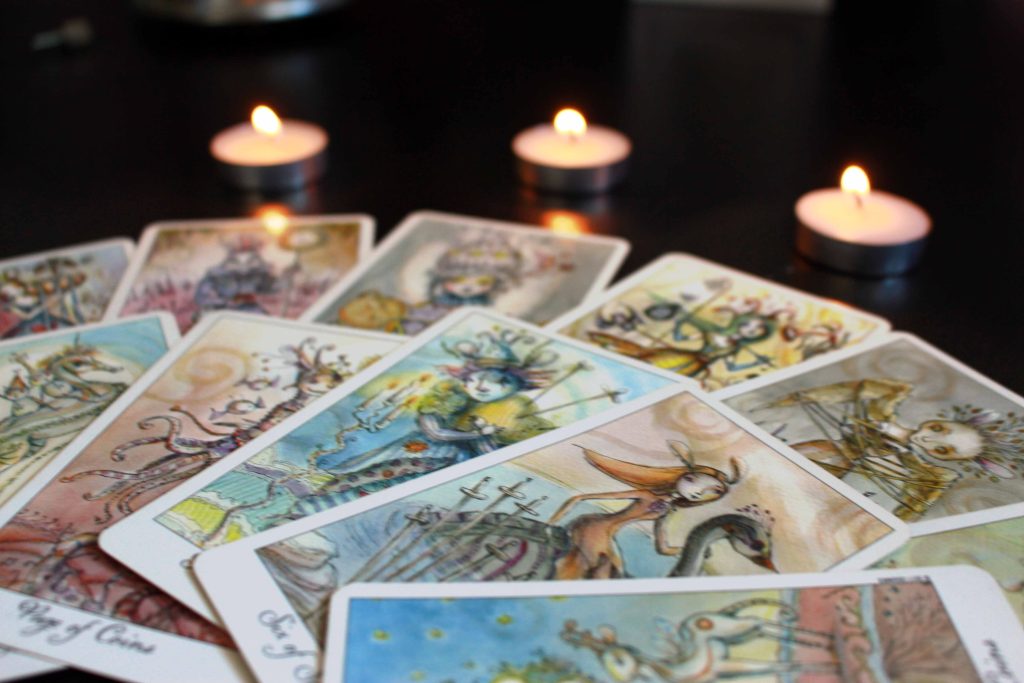

 The Tarot can be used as a guide because it offers a broader and more complete view of the person's life circumstances. It suggests becoming aware of the mistakes and the capacities of each one and shows the means that the person has within themselves to be fully realized and happy.
Through the interpretation of the Cards, fortune tellers can help the consultant to find their way more easily, giving them a broader view of their life and a deeper understanding of what is happening in their life. What lessons need to be learned, how to grow spiritually with these lessons, and how to integrate them into your day-to-day life for a happier and more meaningful life?
The life of each of us is made up of a set of things. We are children, parents, friends, siblings, and co-workers, ... We have work, or we look for it; we are married, separated, divorced, we follow social conventions, or we do not. We have enough money to live the life we want or want to attract greater economic prosperity.
A Tarot is a tool for self-knowledge and for making decisions for the future, focusing on the person and their reality as a whole.
The Tarot is a guide and helps each person to see themselves as a whole. Nothing boils down to just one thing. We are a set of things and circumstances. We are not the branch of a tree, we are the tree, and this vision is one of the main objectives of the Tarot. Connect, relate and interpret reality in the light of the global.
Only then is it possible to become aware of who you are, where you are and where you want to go? This is the only way to define paths and make decisions and be aware of the potential that exists within each person to design and work to build the life they want. In this sense, the Tarot is very important in support, therapy, and self-knowledge.
The Tarot serves as a guide, and, with its help, it is possible to look at the current reality of the person, considering his past and his future. The concrete questions are chosen as the basis for achieving the essential - what is the meaning of what is happening inside the person, and what role does it play in the context of his life?
For it to make sense, the three types of readings are interrelated because we are a set of everything. The Tarot follows the law of synchronicity and surpasses the schemes of the present time. It puts on the table what the unconscious knows but that the conscience does not yet know and forces us to face our life, also giving us the possibility of moving forward in time.
The Tarot can be used as a guide because it offers a broader and more complete view of the person's life circumstances. It suggests becoming aware of the mistakes and the capacities of each one and shows the means that the person has within themselves to be fully realized and happy.
Through the interpretation of the Cards, fortune tellers can help the consultant to find their way more easily, giving them a broader view of their life and a deeper understanding of what is happening in their life. What lessons need to be learned, how to grow spiritually with these lessons, and how to integrate them into your day-to-day life for a happier and more meaningful life?
The life of each of us is made up of a set of things. We are children, parents, friends, siblings, and co-workers, ... We have work, or we look for it; we are married, separated, divorced, we follow social conventions, or we do not. We have enough money to live the life we want or want to attract greater economic prosperity.
A Tarot is a tool for self-knowledge and for making decisions for the future, focusing on the person and their reality as a whole.
The Tarot is a guide and helps each person to see themselves as a whole. Nothing boils down to just one thing. We are a set of things and circumstances. We are not the branch of a tree, we are the tree, and this vision is one of the main objectives of the Tarot. Connect, relate and interpret reality in the light of the global.
Only then is it possible to become aware of who you are, where you are and where you want to go? This is the only way to define paths and make decisions and be aware of the potential that exists within each person to design and work to build the life they want. In this sense, the Tarot is very important in support, therapy, and self-knowledge.
The Tarot serves as a guide, and, with its help, it is possible to look at the current reality of the person, considering his past and his future. The concrete questions are chosen as the basis for achieving the essential - what is the meaning of what is happening inside the person, and what role does it play in the context of his life?
For it to make sense, the three types of readings are interrelated because we are a set of everything. The Tarot follows the law of synchronicity and surpasses the schemes of the present time. It puts on the table what the unconscious knows but that the conscience does not yet know and forces us to face our life, also giving us the possibility of moving forward in time.
